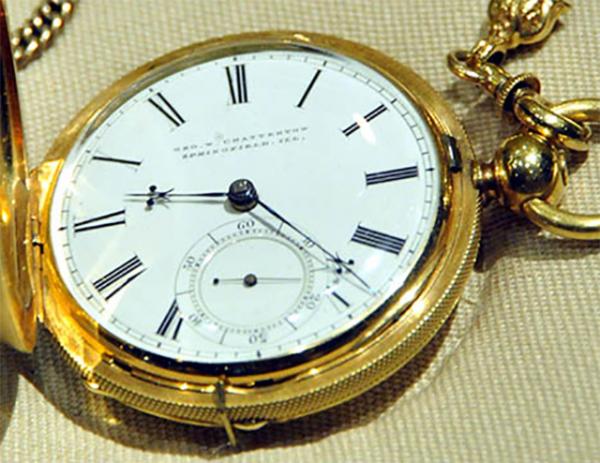KID REPORTERS’ NOTEBOOK
Preserving American History


Solving a mystery: Was the inside of President Abraham Lincoln’s pocket watch inscribed with a special message when the Civil War broke out? The watch is now part of the permanent collection of the National Museum of American History, a Smithsonian Institution in Washington, D.C.
Harry Rubenstein collects political memorabilia for a living. Rubenstein is the chair and curator of the political division of history at the National Museum of American History. I recently spoke with him at his office in Washington, D.C.
What exactly is political memorabilia, I asked. “It includes anything that you could interpret as part of our political discussion,” Rubenstein said.
Since Rubenstein started working at the Smithsonian Institution in 1980, he has helped bring many rare items to the museum. Such artifacts include President Abraham Lincoln’s top hat, the chaps [leather riding pants] worn by President Theodore Roosevelt at his ranch in the Dakotas, and campaign buttons from the current presidential race.
A CIVIL WAR STORY
Rubenstein is especially fond of a story behind one of the museum’s most-treasured artifacts—President Lincoln’s gold pocket watch.
In the mid-1800’s, the United States was a nation divided. Northern states wanted to abolish slavery, but many Southern states did not. Seven states in the South seceded [withdrew] from the Union and formed their own country, the Confederate States of America.
In February 1861, the Confederacy elected its own president, Jefferson Davis. Two months later, Confederate troops attacked Union soldiers at Fort Sumter in South Carolina. The attack sparked the Civil War, which lasted until 1865.
In 2009, Rubenstein received a phone call from a gentleman named Doug Stiles. Stiles told Rubenstein that there had been a longstanding legend in his family, that his great-great-grandfather had inscribed a message inside Lincoln’s pocket watch, which had been part of the Smithsonian collection for years.
According to the legend, Jonathan Dillon was repairing the watch for Lincoln in April 1861, when news broke about the Fort Sumter attack. Dillon immediately took the dial and hands off the watch and engraved a message inside. Stiles wanted to know if the story about his ancestor was true.
“A LITTLE BIT OF GRAFFITI”
Rubenstein had never heard about the legend but was intrigued enough to investigate. He hired a watchmaker to open Lincoln’s watch. Not only had Dillon inscribed a message inside, but others had, too.
Dillon’s message read, “Fort Sumter was attacked by the rebels on the above date. Thank god we have a government. -Jonth Dillon.” Another jeweler had signed his own name, and someone had even written, “Jeff Davis.”
Rubenstein loves the fact that “from the beginning of the war until the end, Lincoln carried a little bit of graffiti with him.” Rubenstein continues to collect memorabilia and uncover mysteries. He is passionate about everything that he collects, whether it is President George Washington’s christening blanket or a winter hat from the current presidential campaign. “On a good day,” Rubenstein said, “this is a dream job.”
